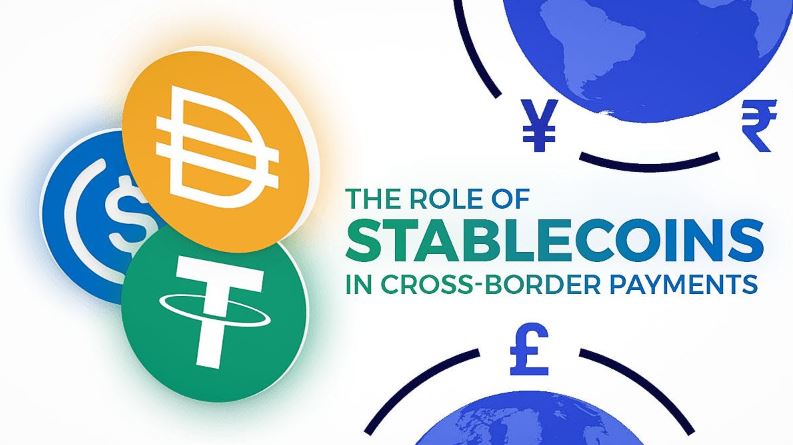
Unlike traditional cryptocurrencies such as Bitcoin and Ethereum, which are subject to significant price fluctuations, stablecoins aim to maintain a stable value, typically by pegging their value to a fiat currency like the US dollar or by using algorithms to stabilize their price.
In this article, we will explore the role of stablecoins in the DeFi landscape, their benefits, challenges, and future outlook.
Investors can broaden their knowledge and skills through Bit ePrex Pro, a platform that connects them with educational firms specializing in financial learning.
Understanding Stablecoins
Stablecoins are digital assets designed to minimize price volatility, making them suitable for use as a medium of exchange, a unit of account, and a store of value. There are several types of stablecoins, including fiat-collateralized, crypto-collateralized, and algorithmic stablecoins.
Fiat-Collateralized Stablecoins: These stablecoins are backed by reserves of fiat currency held in a bank account. Examples include Tether (USDT), USD Coin (USDC), and TrueUSD (TUSD). The value of these stablecoins is maintained at a 1:1 ratio with the underlying fiat currency.
Crypto-Collateralized Stablecoins: These stablecoins are backed by reserves of other cryptocurrencies, such as Ethereum or Bitcoin. Examples include MakerDAO’s Dai and Synthetix’s sUSD. The value of these stablecoins is maintained through overcollateralization and smart contract mechanisms.
Algorithmic Stablecoins: These stablecoins use algorithms to automatically adjust the coin’s supply in response to changes in demand, aiming to stabilize the price. Examples include Terra’s TerraUSD (UST) and Ampleforth (AMPL). Algorithmic stablecoins are not backed by any collateral but rely on the protocol’s mechanisms to maintain stability.
Benefits of Stablecoins in DeFi
Stablecoins play a crucial role in the DeFi ecosystem, offering several benefits:
Efficient Trading and Investment: Stablecoins enable traders and investors to move funds quickly and efficiently between different DeFi platforms without being exposed to the volatility of other cryptocurrencies.
Reduced Volatility Risk: By providing a stable value, stablecoins minimize the risk of price fluctuations, making them suitable for long-term saving and planning.
Instant Settlements: Transactions using stablecoins can be settled instantly, enabling faster and cheaper cross-border payments compared to traditional banking systems.
Challenges and Risks
Despite their benefits, stablecoins face several challenges and risks:
Regulatory Uncertainties: The regulatory status of stablecoins varies from country to country, leading to uncertainty and potential regulatory scrutiny.
Centralization Risks: Some stablecoins, particularly fiat-collateralized ones, are centralized and rely on trusted third parties to maintain their peg. This centralization introduces counterparty risk and dependence on regulatory compliance.
Systemic Risk: In the event of a stablecoin failure or loss of peg, there could be significant repercussions for the broader financial system, especially if the stablecoin is widely used in DeFi protocols.
Innovations and Developments
The stablecoin ecosystem is constantly evolving, with ongoing innovations and developments:
Technology Advancements: New stablecoin protocols and algorithms are being developed to improve stability and scalability. Projects like Terra and Ampleforth are pushing the boundaries of algorithmic stablecoins.
Integration with DeFi Platforms: Stablecoins are increasingly being integrated into decentralized exchanges (DEXs), lending protocols, and other DeFi platforms, expanding their utility and accessibility.
Stablecoins and Financial Inclusion
Stablecoins have the potential to promote financial inclusion by:
Providing Stability in Unstable Economies: In countries with volatile or unstable currencies, stablecoins offer a reliable store of value and medium of exchange, empowering individuals and businesses to transact with confidence.
Access to Banking Services: Stablecoins can provide access to banking services for the unbanked and underbanked populations, enabling them to participate in the global economy without relying on traditional financial institutions.
Future Outlook
The future of stablecoins looks promising, with continued growth and adoption expected in the coming years:
Increased Adoption in DeFi: As DeFi continues to gain traction, stablecoins are likely to become even more essential for accessing and participating in decentralized financial services.
Impact on Traditional Finance: Stablecoins could disrupt traditional finance by offering cheaper, faster, and more inclusive financial services, challenging the dominance of traditional banking systems.
Conclusion
Stablecoins serve as the anchor of a decentralized financial system, providing stability, efficiency, and accessibility to users around the world. Despite facing challenges and uncertainties, the continued innovation and adoption of stablecoins are driving the growth of the DeFi ecosystem and reshaping the future of finance.








